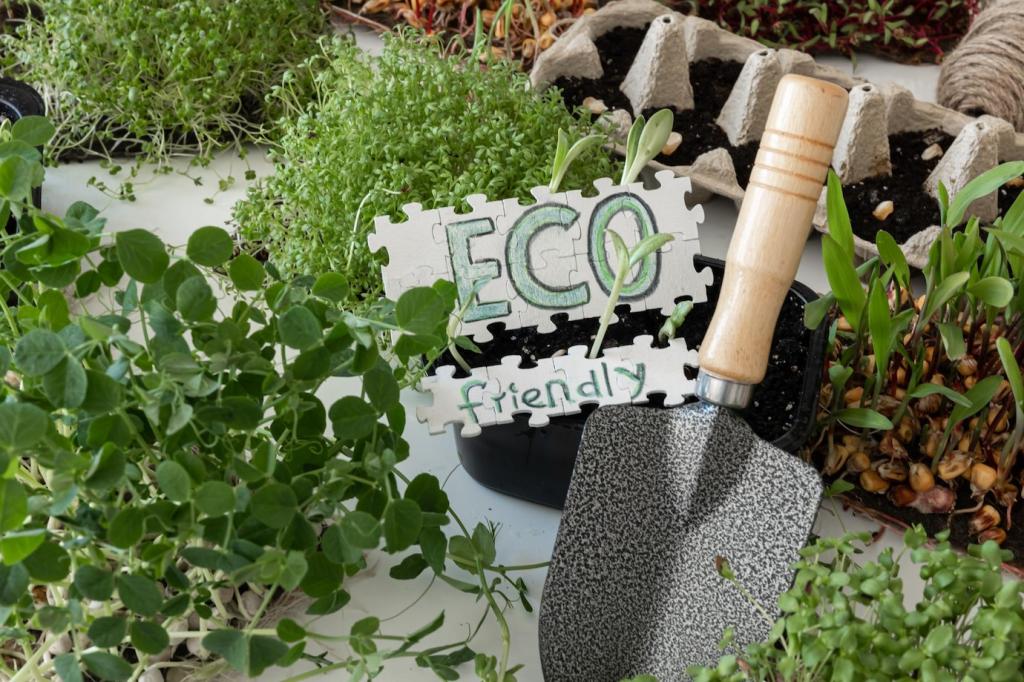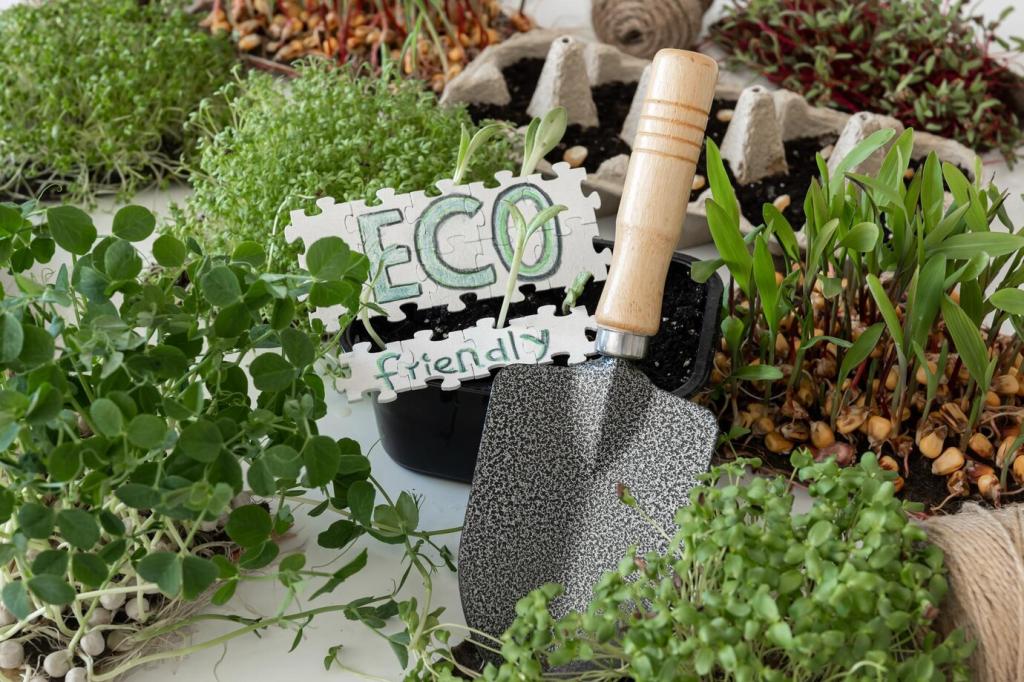Chosen theme: Rainwater Harvesting Systems for Landscapes. Learn how to capture seasonal showers, store clean water, and nourish living soil and plants while easing stormwater impacts. Share your questions in the comments and subscribe for practical, garden-tested ideas.
Your system starts at the roof or paved catchment, continues through gutters, leaf screens, and a first-flush diverter, then passes filters into storage. Gravity or a pump moves water to drip lines, bubblers, or permeable basins.
How Rainwater Harvesting Works in the Landscape


Site Assessment and System Design
Map runoff paths from roof planes and patios, note slopes, and test soil infiltration with a simple percolation hole. Clay-rich soils favor shallow, wide basins; sandy soils accept deeper infiltration. Invite readers: how does your site behave after rain?
Site Assessment and System Design
Multiply roof area by average storm depth and conversion factors to estimate volumes. Balance desired irrigation days with realistic tank capacity, frequency of rain, and overflow routes to rain gardens so excess becomes a resource, not a problem.
Integrating Storage with Irrigation
Elevate tanks or use slopes to gain reliable gravity pressure for simple drip zones. When elevation is limited, quiet, efficient pumps with pressure switches provide steady flow. Add pressure gauges and unions for easy maintenance and quick troubleshooting.
First-Flush Diverters and Gutter Hygiene
A well-sized first-flush diverter discards debris-laden initial runoff, protecting filters and tanks. Regularly clear gutters and screens to prevent blockages, staining, and mosquito habitat. What cleaning routine works for you after windy, leaf-heavy weeks?
Filtering and Materials That Protect Plants
Install multi-stage filtration: leaf screens, sediment filters, and optional carbon cartridges for sensitive ornamentals. Use food-grade hoses and fittings where possible. Avoid roofing materials that leach harmful compounds into garden irrigation over time.
Mosquito and Algae Prevention Outdoors
Seal inlets with mesh, add tight lids, and maintain dark tanks to limit algae. Ensure no stagnant puddles persist around overflow points. Simple habits and good design keep water fresh while supporting pollinator-friendly, chemical-free landscapes.
Seasonal Operation and Maintenance
Before big rains, empty space in tanks to capture fresh flow and reduce runoff. During dry spells, prioritize young trees and edible beds, then natives. Tell us how you triage irrigation when weather turns stingy and clouds disappear.
Economics, Incentives, and Community Impact
Lower irrigation costs, healthier plants, and reduced erosion add up. Over time, fewer replacements and wiser watering improve property value. Share your numbers, and we’ll learn together which combinations deliver the fastest, most dependable paybacks.


Economics, Incentives, and Community Impact
Many cities offer rebates for cisterns, permeable basins, or smart controllers. Check setbacks, overflow requirements, and backflow rules early. Subscribe for our evolving map of incentives and comment with your local policy tips to help fellow readers.
Stories from the Yard: Real Results
A 1,200-gallon system fed drip lines to citrus and herbs. By mulching deeply and timing irrigations after storms, the owners halved summer demand. Their favorite moment: hearing gutters sing while the tank gauge steadily climbed.

